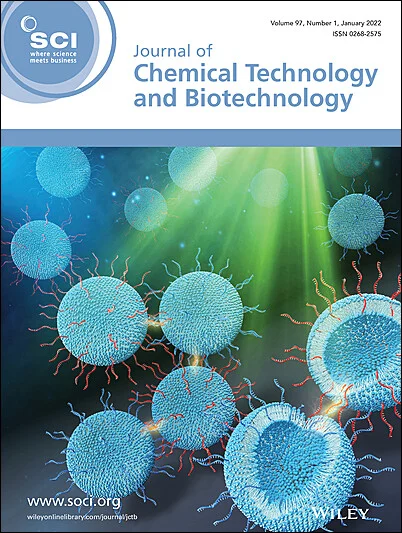Jinghui Chen, Wenhan Zhong, Shahzad Afzal, Liaqat Zeb, Ming Zhang, Ligang Luo, Dong Zhang, Tao Ding, Liheng Xu, Aqeel Mahmood
求助PDF
{"title":"含铁生物炭去除水中含氯有机污染物的研究进展","authors":"Jinghui Chen, Wenhan Zhong, Shahzad Afzal, Liaqat Zeb, Ming Zhang, Ligang Luo, Dong Zhang, Tao Ding, Liheng Xu, Aqeel Mahmood","doi":"10.1002/jctb.7882","DOIUrl":null,"url":null,"abstract":"<p>Chlorinated organic pollutants (COPs) have garnered significant attention due to their propensity for easy migration, difficulty in degradation, carcinogenicity and volatility, all posing a threat to ecological safety and human health. Effective removal of COPs from the environmental matrix is crucial. Fe-loaded biochar (Fe@BC) is an artificial synthetic carbonaceous composite. Fe@BC has been widely studied for its potential for COP removal. On the one hand, Fe can activate oxidants to generate oxidizing free radicals, while, on the other, it can also serve as a reducing agent to dechlorinate and reduce COPs. Furthermore, biochar as a substrate for Fe can prevent the agglomeration of Fe<sup>0</sup>, and its porosity facilitates the adsorption of COPs. The utilization of Fe@BC effectively enhances the removal efficiency of COPs by the synergetic advantages of both Fe<sup>0</sup> and biochar. No review paper has been published on Fe@BC for COP removal in water. Hence, it is crucial to summarize the state-of-the-art progress of Fe@BC production, performance efficiency and mechanisms for COP removal. Thus, in this mini-review, we have systematically provided the recent research on removing COPs by Fe@BC and prospects for promoting the practical use of Fe@BC for that purpose, which may provide insight into sustainable wastewater treatment and groundwater management. © 2025 Society of Chemical Industry (SCI).</p>","PeriodicalId":15335,"journal":{"name":"Journal of chemical technology and biotechnology","volume":"100 9","pages":"1762-1780"},"PeriodicalIF":2.4000,"publicationDate":"2025-04-24","publicationTypes":"Journal Article","fieldsOfStudy":null,"isOpenAccess":false,"openAccessPdf":"","citationCount":"0","resultStr":"{\"title\":\"Removal of chlorinated organic pollutants from water by Fe-loaded biochar: a review\",\"authors\":\"Jinghui Chen, Wenhan Zhong, Shahzad Afzal, Liaqat Zeb, Ming Zhang, Ligang Luo, Dong Zhang, Tao Ding, Liheng Xu, Aqeel Mahmood\",\"doi\":\"10.1002/jctb.7882\",\"DOIUrl\":null,\"url\":null,\"abstract\":\"<p>Chlorinated organic pollutants (COPs) have garnered significant attention due to their propensity for easy migration, difficulty in degradation, carcinogenicity and volatility, all posing a threat to ecological safety and human health. Effective removal of COPs from the environmental matrix is crucial. Fe-loaded biochar (Fe@BC) is an artificial synthetic carbonaceous composite. Fe@BC has been widely studied for its potential for COP removal. On the one hand, Fe can activate oxidants to generate oxidizing free radicals, while, on the other, it can also serve as a reducing agent to dechlorinate and reduce COPs. Furthermore, biochar as a substrate for Fe can prevent the agglomeration of Fe<sup>0</sup>, and its porosity facilitates the adsorption of COPs. The utilization of Fe@BC effectively enhances the removal efficiency of COPs by the synergetic advantages of both Fe<sup>0</sup> and biochar. No review paper has been published on Fe@BC for COP removal in water. Hence, it is crucial to summarize the state-of-the-art progress of Fe@BC production, performance efficiency and mechanisms for COP removal. Thus, in this mini-review, we have systematically provided the recent research on removing COPs by Fe@BC and prospects for promoting the practical use of Fe@BC for that purpose, which may provide insight into sustainable wastewater treatment and groundwater management. © 2025 Society of Chemical Industry (SCI).</p>\",\"PeriodicalId\":15335,\"journal\":{\"name\":\"Journal of chemical technology and biotechnology\",\"volume\":\"100 9\",\"pages\":\"1762-1780\"},\"PeriodicalIF\":2.4000,\"publicationDate\":\"2025-04-24\",\"publicationTypes\":\"Journal Article\",\"fieldsOfStudy\":null,\"isOpenAccess\":false,\"openAccessPdf\":\"\",\"citationCount\":\"0\",\"resultStr\":null,\"platform\":\"Semanticscholar\",\"paperid\":null,\"PeriodicalName\":\"Journal of chemical technology and biotechnology\",\"FirstCategoryId\":\"5\",\"ListUrlMain\":\"https://scijournals.onlinelibrary.wiley.com/doi/10.1002/jctb.7882\",\"RegionNum\":4,\"RegionCategory\":\"生物学\",\"ArticlePicture\":[],\"TitleCN\":null,\"AbstractTextCN\":null,\"PMCID\":null,\"EPubDate\":\"\",\"PubModel\":\"\",\"JCR\":\"Q3\",\"JCRName\":\"BIOTECHNOLOGY & APPLIED MICROBIOLOGY\",\"Score\":null,\"Total\":0}","platform":"Semanticscholar","paperid":null,"PeriodicalName":"Journal of chemical technology and biotechnology","FirstCategoryId":"5","ListUrlMain":"https://scijournals.onlinelibrary.wiley.com/doi/10.1002/jctb.7882","RegionNum":4,"RegionCategory":"生物学","ArticlePicture":[],"TitleCN":null,"AbstractTextCN":null,"PMCID":null,"EPubDate":"","PubModel":"","JCR":"Q3","JCRName":"BIOTECHNOLOGY & APPLIED MICROBIOLOGY","Score":null,"Total":0}
引用次数: 0
引用
批量引用



 求助内容:
求助内容: 应助结果提醒方式:
应助结果提醒方式:


